Characterization of Immune-Related Genes and Immune Infiltration Features in Epilepsy by Multi-Transcriptome Data
- PMID: 35547834
- PMCID: PMC9084924
- DOI: 10.2147/JIR.S360743
Characterization of Immune-Related Genes and Immune Infiltration Features in Epilepsy by Multi-Transcriptome Data
Abstract
Background: Epilepsy encompasses a group of heterogeneous brain diseases that afflict about 1% of the world's population. Accumulating evidence shows that the immune system plays a key role in epileptogenesis. Nevertheless, the immune-related mechanisms remain not been precisely understood.
Methods: Three epilepsy datasets (GSE16969, GSE32534 and GSE143272) were screened to obtain differentially expressed immune-related genes (DEIRGs). Random forest (RF) and protein-protein interaction (PPI) network were constructed to identify core genes. Another dataset (GSE31718) and 60 clinical samples via quantitative real-time polymerase chain reaction (qRT-PCR) were utilized to validate core genes. Immune cell infiltration score was performed with CIBERSORTx tools and single-sample gene set enrichment analysis (ssGSEA). Gene set variation analysis (GSVA) and ssGSEA were conducted to determine the pathways that are significantly enriched during normal and epilepsy. The correlation between hub genes, immune cells, and enriched molecular pathways was evaluated by Pearson correlation analysis.
Results: Based on RF and PPI, 4 DEIRGs (CSF1R, IL6R, TLR2, and TNFRSF1A) were identified as hub genes. Results of qRT-PCR validated that higher expression levels of CSF1R, IL6R, TLR2, and TNFRSF1A in epilepsy samples compared to control sample. Immune infiltration analysis by CIBERSORTx displayed immune signatures that are significantly richer in epilepsy, T cell subsets in particular. Notably, ssGSEA found that Th1 signatures were more abundant in normal tissues; yet Th2 signatures were more abundant in epilepsy tissues. Cytokine cytokine receptor interaction (CCR) was significantly enriched in epilepsy based on multi-transcriptome data. Additionally, hub genes were significantly correlated with score of Th1/Th2 signatures and enrichment score of CCR in multi-transcriptome data.
Conclusion: Four IRGs (CSF1R, IL6R, TLR2, and TNFRSF1A) were closely correlated pathogenesis of epilepsy, which may be by impacting CCR and the balance of Th1/Th2 signatures involved in the occurrence of epilepsy. Our data offer compelling insights into the pathogenesis and promising therapeutic targets for epilepsy.
Keywords: CCR; Th1/Th2 signatures; epilepsy; immune infiltration; immune-related genes.
© 2022 Hou et al.
Conflict of interest statement
The authors declare that they have no competing interests in this work.
Figures


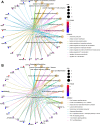

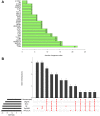
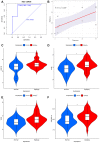
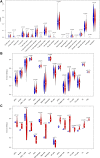

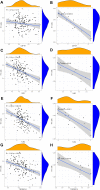
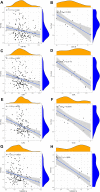

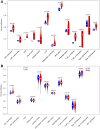
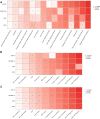
Similar articles
-
Construction of an HLA Classifier for Early Diagnosis, Prognosis, and Recognition of Immunosuppression in Sepsis by Multiple Transcriptome Datasets.Front Physiol. 2022 May 24;13:870657. doi: 10.3389/fphys.2022.870657. eCollection 2022. Front Physiol. 2022. PMID: 35685286 Free PMC article.
-
Comparison of immune-related gene signatures and immune infiltration features in early- and late-onset preeclampsia.J Gene Med. 2024 Feb;26(2):e3676. doi: 10.1002/jgm.3676. J Gene Med. 2024. PMID: 38362844
-
Identification of significant immune-related genes for epilepsy via bioinformatics analysis.Ann Transl Med. 2021 Jul;9(14):1161. doi: 10.21037/atm-21-2792. Ann Transl Med. 2021. PMID: 34430602 Free PMC article.
-
Integrative analysis of potential biomarkers and immune cell infiltration in Parkinson's disease.Brain Res Bull. 2021 Dec;177:53-63. doi: 10.1016/j.brainresbull.2021.09.010. Epub 2021 Sep 16. Brain Res Bull. 2021. PMID: 34536521
-
Integrated identification of key immune related genes and patterns of immune infiltration in calcified aortic valvular disease: A network based meta-analysis.Front Genet. 2022 Sep 21;13:971808. doi: 10.3389/fgene.2022.971808. eCollection 2022. Front Genet. 2022. PMID: 36212153 Free PMC article.
Cited by
-
NLRP3 Inflammasome Inhibition After Pilocarpine-Induced Status Epilepticus Attenuates Chronic Inflammation in Epileptic Mice.J Inflamm Res. 2024 Sep 7;17:6143-6158. doi: 10.2147/JIR.S469451. eCollection 2024. J Inflamm Res. 2024. PMID: 39262652 Free PMC article.
-
Bioinformatics analysis reveals the landscape of immune cell infiltration and novel immune-related biomarkers in moyamoya disease.Front Genet. 2023 May 17;14:1101612. doi: 10.3389/fgene.2023.1101612. eCollection 2023. Front Genet. 2023. PMID: 37265961 Free PMC article.
-
Systematic analysis of MASP-1 serves as a novel immune-related biomarker in sepsis and trauma followed by preliminary experimental validation.Front Med (Lausanne). 2024 Feb 7;11:1320811. doi: 10.3389/fmed.2024.1320811. eCollection 2024. Front Med (Lausanne). 2024. PMID: 38384415 Free PMC article.
-
Th1/Th2 Imbalance in Peripheral Blood Echoes Microglia State Dynamics in CNS During TLE Progression.Adv Sci (Weinh). 2024 Oct;11(39):e2405346. doi: 10.1002/advs.202405346. Epub 2024 Aug 13. Adv Sci (Weinh). 2024. PMID: 39136073 Free PMC article.
-
Construction of the miRNA/Pyroptosis-Related Molecular Regulatory Axis in Abdominal Aortic Aneurysm: Evidence From Transcriptome Data Combined With Multiple Machine Learning Approaches Followed by Experiment Validation.J Immunol Res. 2024 Oct 30;2024:1429510. doi: 10.1155/2024/1429510. eCollection 2024. J Immunol Res. 2024. PMID: 39512836 Free PMC article.
References
-
- World Health Organization. Epilepsy Factsheet. WHO Webpage; 2020. Available from: https://www.who.int/news-room/fact-sheets/detail/epilepsy. Accessed October 16, 2020.
LinkOut - more resources
Full Text Sources
Research Materials
Miscellaneous

